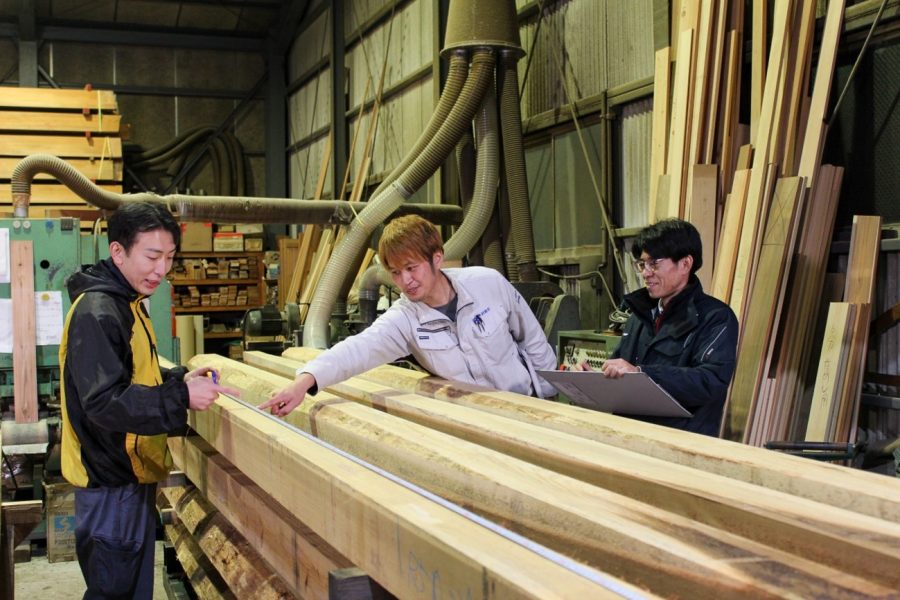
While the “stone culture” of Europe is famous, the “wood culture” of Japan is well known around the world. Residents of the Yoshino region in Nara Prefecture have maintained the “cycle of trees” as a bearer of the culture for 500 years. Successors in Yoshino will introduce “benches made of lumber in Yoshino, which exists in the cycle of trees” to the world through Co-Design Challenge. In order to redevelop a new Yoshino brand, they will convey a story infused into the benches.
The Yoshino region, which is famous for a spot where visitors can “view a countless number of trees of mountain cherry blossoms,” has had a face as “a town of trees” since ancient days. In particular, the area surrounding Yoshino-Jingu Station of Yoshino Line of Kintetsu Railway, which is the gateway to Yoshino region, thrived as “Yoshino Lumberyard,” a hub for distributing lumber with many raw wood markets and lumbermills. However, the number of related business operators dropped to around one fifth of the number during its prime, so the area looks a bit desolate.
“When I was a child, this area was bustling, but many people moved out over the past few decades. Forestry and lumbering are declining around Japan, and Yoshino, which has a history of 500 years, is no exception,” said Teruichi Ishibashi, a senior managing director of “Yoshino Chuou Mokuzai Company” located in the vicinity of the station. Ishibashi entered a college outside Nara Prefecture, and worked as an employee at companies in Osaka and Tokyo, but returned to his hometown, to take over the family business when he was 27 years old. Many people of the same generation who have grown up with parents operating lumbering business still reside outside their hometown.
The Yoshino region is considered as the place where Japanese afforestation started. With the three unique methods: “dense planting,” in which over 8,000 trees are planted per 1 hectare, “frequent thinning,” in which moderate thinning is conducted every 10 years, and “long-term growth” until a tree turns 100 years old or older, they have grown straight sturdy trees with beautiful colors and gloss and a gentle aroma for a long period of time. Cedar and cypress were processed with meticulous lumbering technologies and shipped to around Japan, meeting the strong demand for lumber during the rapid economic growth period, and fortifying the “brand of Yoshino lumber.”
However, it is impossible to go against the turbulent trends of the times. Due to the decrease of wooden houses, the liberalization of import of lumber, etc., lumber price declined after reaching the peak in the 1970s, and the utilization rate of lumbermills dropped. In parallel, workers decreased, and many business founders discontinued their business without passing the business to the next generation.
Amid that crisis, voluntary successors formed “the Society for Living with Yoshino” in 2012. The representative director Mitsuhiko Maru of “Marushouten Co., Ltd.,” who inherited the family business after returning to his hometown, recalled, “I noticed after leaving my hometown that it is impossible to realize the characteristics of Yoshino lumber, related technologies, and living with trees in a short period of time. It is the unavoidable mission of successors to keep protecting what has been passed down.” About 10 members in their 20s to 40s, including Ishibashi, Maru, and other youngsters, initiated activities for disseminating the “cycle of trees” which has been passed down since 500 years ago.


Share this article


